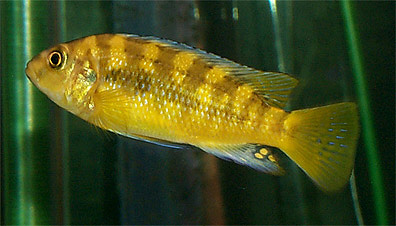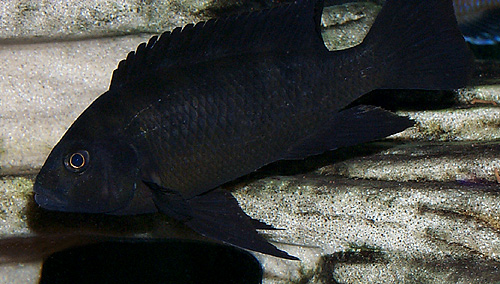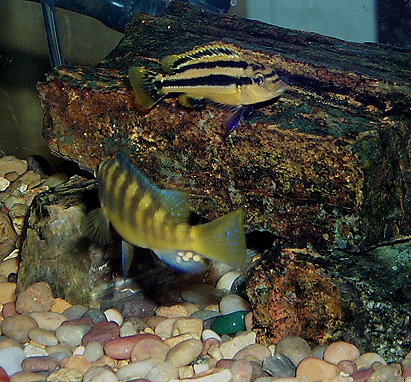
Rift lake cichlids have a rather complex behavior, primarily expressed through color and movement. Although they are nearsighted, they have good color vision within a couple meter range. Most cichlids come to recognize who feeds them and often refuse to come out when unfamiliar people approach the tank. My 155 gallon is in an office environment, so they are used to a variety of people and will swim to the front of the tank for just about anyone. They tend to be more timid on weekends when no one is around.

Rift lake cichlids express timidness and dominance through color. A pale fish is a stressed or timid fish, whereas a very dark fish is a dominant or aggressive fish. The dominant male will have deep vibrant colors or possibly be almost entirely black.
The Maylandia crabro on the right has just been transferred into a new tank and is showing stressed coloration. The picture below is the same fish chasing another male (note the battle scars).


Most cichlid movements are either threats or flirting. Telling the difference between the two is fairly difficult. Shimmying or shaking of the fins and tail are usually signs of flirtation. I've also seen circular chasing and nipping or kissing (where the two fish grab each other's mouths) prior to mating. Chasing across the tank is more often a sign of aggression.
On the right a female Melanochromis chipokae and a male Maylandia crabro size each other up. These two fish are trying to determine which one "owns" the small rock structure in the background.
If you know the genders of the fish, interpreting behavior is easier. Male-male and female-female interactions are almost always unfriendly. Male-female interactions between two fish of the same species or two similar fish of the same genus are often flirtatious. Aggressive behavior also generally results in small injuries to the participants.
Comments? Questions? Contact l x s @ m a c . c o m.
All pages copyright ©2000-2015 Alexandra Ellwood.
Last modified at Sunday, April 19, 2015